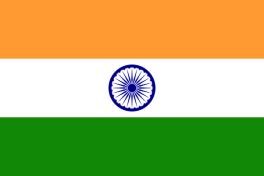Donate to Support Supercluster
Your support makes the Astronaut Database and Launch Tracker possible, and keeps all Supercluster content free.
SUPPORTSupercluster on Patreon
Your support makes the Astronaut Database and Launch Tracker possible, and keeps all Supercluster content free.
SUPPORTThis goes
to space
Chandrayaan-3
Chandrayaan 3 is an ISRO (Indian Space Research Organization) mission with the primary objective of putting a lander and rover in the highlands near the south pole of the Moon in the August 2023 timeframe and demonstrating end-to-end landing and roving capabilities.
It will also make a number of scientific measurements on the surface and from orbit. It comprises a lander/rover and a propulsion module. The lander/rover will be similar to the Vikram rover on Chandrayaan 2, with improvements to help ensure a safe landing. It will be carried to lunar orbit by the propulsion module which will remain in orbit around the Moon and act as a communications relay satellite.
Spacecraft and Subsystems
The propulsion module is a box-like structure (modified I-3K structure) with one large solar panel mounted on one side and a large cylinder on top (the Intermodule Adapter Cone) that acts as a mounting structure for the lander. The main thruster nozzle is on the bottom. It has a mass of 2145.01 kg, of which 1696.39 kg is propellant for the MMH + MON3 bi-propellant propulsion system. It can generate 738 W power. Communications is via S-Band and attitude sensors include a star sensor, Sun sensor, and Inertail Reference unit and Accelerometer Package (IRAP).
The lander is also generally box-shaped (200 x 200 x 116.6 cm), with four landing legs and four landing thrusters. It has a mass of 1749.86 kg, including 26 kg for the rover, and can generate 738 W using side-mounted solar panels. The lander has a number of sensors to ensure a safe touchdown, including an accelerometer, altimeters (Ka-band and laser), Doppler velocimeter, star sensors, inclinometer, touchdown sensor, and a suite of cameras for hazard avoidance and positional knowledge. Reaction wheels are used for attitude control, and propulsion is provided by a MMH and MON3 bipropellant system with four 800 N throttleable engines and eight 58 N throttleable engines. An X-band antenna is used for communications. The lander carries the rover in a compartment with a ramp for deployment onto the surface.
The rover is a rectangular chassis, 91.7 x 75.0 x 39.7 cm in size, mounted on a six-wheel rocker-bogie wheel drive assembly. It has navigation cameras and a solar panel that can generate 50 W. It communicates directly with the lander via Rx/Tx antennas.
The lander will carry an instrument called Chandra’s Surface Thermophysical Experiment (ChaSTE) to measure surface thermal properties, the Instrument for Lunar Seismic Activity (ILSA) to measure seismicity around the landing site, the Radio Anatomy of Moon Bound Hypersensitive ionosphere and Atmosphere (RAMBHA) to study the gas and plasma environment, and a passive laser retroreflector array provided by NASA for lunar ranging studies.
The rover will carry two instruments to study the local surface elemental composition, an Alpha Particle X-ray Spectrometer (APXS) and Laser Induced Breakdown Spectroscope (LIBS). The Propulsion Module / Orbiter will carry one experiment called the Spectropolarimetry of HAbitable Planet Earth (SHAPE) to study Earth from lunar orbit.
Mission Profile
The mission is currently scheduled to launch on 14 July 2023 at 9:05 UT (2:35 p.m. India standard time), with a possibility to launch as late as 19 July, on a GSLV Mark 3 (LVM 3) heavy-lift launch vehicle from Satish Dhawan Space Center in Sriharikota, India. It will place Chandrayaan 3 into an approximately 170 x 36,500 km elliptic parking orbit.
The propulsion module will bring the lander/rover will into a 100 km circular polar lunar orbit and separate. The lander will then touch down with the rover in the south polar region of the Moon, near 69.37 S, 32.35 E. For the scheduled launch time, touchdown is expected to occur near the end of August. Touchdown velocity is planned to be less than 2 m/s vertical and 0.5 m/s horizontal.
The propulsion module / communications relay satellite will remain in lunar orbit to enable communications with Earth. Chandrayaan 2 will also be used as a backup relay. The lander and rover are designed to operate for one lunar daylight period (about 14 Earth days).
On this
rocket
GSLV Mk II
Geosynchronous Satellite Launch Vehicle Mark II (GSLV Mk II) is the launch vehicle developed by India, to launch communication satellites in geo transfer orbit using cryogenic third stage. Initially Russian GK supplied cryogenic stages were used. Later cryogenic stage was indigenously developed and inducted in Jan 2014 from GSLV D5 onwards. This operational fourth generation launch vehicle is a three stage vehicle with four liquid strap-ons. The flight proven indigenously developed Cryogenic Upper Stage (CUS), forms the third stage of GSLV Mk II. From January 2014, the vehicle has achieved six consecutive successes.
Stats
Height: 51.73 m (With Ogive PLF)
Number of Stages: 3
Lift Off Mass: 420 tonnes
Payload to GTO: 2,250 kg (4,960 lbs)
Payload to LEO (Low Earth Orbit) : 6,000 kg (13,227.7 lbs)
Credit: ISRO
From this
launch site
Second Launch Pad - Satish Dhawan Space Centre
The Second Launch Pad was built between March 1999 and December 2003.
It was used for the first time on May 5th, 2005 and can launch three different types of rockets: the Polar Satellite Launch Vehicle (PSLV), the Geostationary Satellite Launch Vehicle (GSLV) Mk-II, and the GSLV Mk-III.
The pad has launched several important missions. One of them was Chandrayaan-1, India's first Moon mission and the flight that discovered water on the lunar surface.
The pad is also the one India plans to use for its upcoming human space program.
Satish Dhawan Space Centre
The Satish Dhawan Space Centre, or Sriharikota Range, is a rocket launch center operated by the Indian Space Research Organisation (ISRO).
It is located in Sriharikota in Andhra Pradesh and was chosen for its remote location. The center launched its first suborbital mission in 1971 and first orbital flight on August 10th, 1979.
The spaceport received its current name in 2005 when it was named in honor of Satish Dhawan, the former head of the ISRO.
The facility has two launch pads and will be the base of India's upcoming human spaceflight program.
Image credit: ISRO
Here's where to view Chandrayaan-3
Viewing Sites
- Satish Dhawan Launch Viewing Gallery
GET THE SUPERCLUSTER APP
THE SUPERCLUSTER PODCAST
A podcast exploring the amazing milestones that changed space history, the wildest ideas that drive our future, and every development in this new Golden Age of Space.
Donate to support
Your support makes the Astronaut Database and Launch Tracker possible, and keeps all Supercluster content free.
SupportCOPYRIGHT 2021 SUPERCLUSTER LLC






